The law of diminishing returns dictates that no Jurassic Park IP can be as good as the one that came before it (JP3 to Jurassic World aside). Even Michael Crichton’s Lost World isn’t as popular as the book that started it all. But Frontier Development’s Jurassic World Evolution 2 chomps that law in two. It’s bigger, smarter, and stronger than its predecessor in almost every way.
Evolved and synthesized from the embryonic DNA of Jurassic World Evolution, this new breed of prehistoric park management sim cleverly recognizes its past, present, and future in equal measure. Doing so takes the franchise to new heights while creating the dino sandbox fans have always wanted.
It’s not perfect. There’s still more for Frontier Developments to unearth in future sequels should they choose to make them. But Jurassic World Evolution 2 is, right now, the true Indominus Rex.
Jurassic World Evolution 2 Review: Climbing the Evolutionary Ladder
At its core, Jurassic World Evolution 2 is still very much a park management game about breeding dinosaurs and raking in the profit, all while keeping park goers from getting eaten by an Allosaurus or Velociraptor.
You begin most scenarios with a few buildings and a little bit of infrastructure — a park entrance, a command center, a few enclosures, and some walkways — before being set loose. You’ll add more enclosures and more dinosaurs to increase your park appeal and rating as you build. This loop attracts more tourists to the feeding ground and raises more money for expansion.
Unlike in JWE, you can now hire a team of scientists that can be assigned to various tasks like medical research, fossil excavation, dinosaur synthesis, and treating major dino injuries like broken bones.
Adding a wrinkle to it all, each scientist has specific traits that make them more or less efficient at these tasks, and many jobs require a combination of scientists to complete. You’ll have to decide what duties take priority, hiring and firing scientists to get the right mixture of stats. Be sure to let them rest, though, lest they become disgruntled and sabotage your park.
Alongside these workers, you’ll also have rangers who keep track of dino needs, refill feeders, and tranquilize any dinosaurs that escape or need to be transported. Additional medical personnel can diagnose diseases and injuries in the field and treat them there. It is, admittedly, a bit odd that medical staff themselves can’t treat severe injuries, but scientists can. Que sera sera.
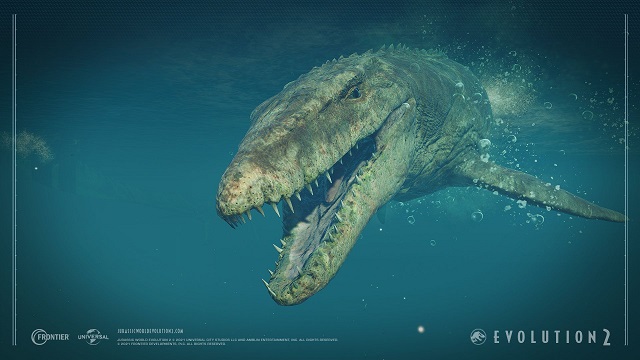
The main attraction for any game about dinosaurs is, well, the dinosaurs themselves. There are 84 total: 79 in the base game and five as part of the Deluxe Edition. Four more are coming in the Early Cretaceous Pack DLC on December 9.
Most exciting is the inclusion of flying dinosaurs and aquatic reptiles; Jurassic World Evolution feels categorically empty in comparison once you can build an aviary for Pteranodons or a lagoon (complete with shark feeders) for a Mosasaur here.
As before, dinosaurs have specific needs that must be met. Some require more open space; others need forest or ground cover. Still, others need sand instead of grass, live animal feeders, or a specific population density to flourish.
Cohabitation likes and dislikes factor into dinosaur comfort, too, though the system can be frustrating since some are just plain wrong (carnivores of all types may like Compsognathus but apparently only as a snack). Territory, too, feels a bit half-baked, mostly leading to confusion until you understand it and disregard it thereafter.
Despite that, attending to these needs is important because angry dinosaurs fight each other or break out of their enclosures, tying up scientists unduly or lowering your park appeal, rating, and income.
Fortunately, dino-watching isn’t your only source of money. As in almost any other park sim, you can set up shops and attractions to sell goods and services to park-goers. The system here isn’t as in-depth as elsewhere, but it’s an improvement over Jurassic World Evolution, adding an appreciated layer of strategy.
You can now monitor what park-goers want and adjust shops to meet demand. It’s also possible to add mini-attractions like fish tanks and karaoke bars inside shops and restaurants to draw in different types of patrons.
Making sense of these moving parts is made easier than before with more in-depth stat screens, giving you a better look at how parts of your park are performing in real-time, as well as every month.
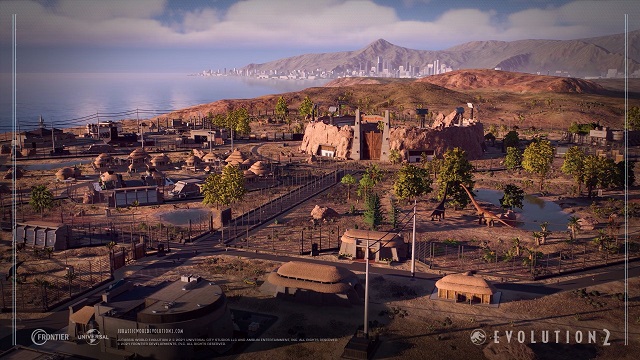
All of this happens in one of four modes: Campaign, Challenge, Chaos Theory, and Sandbox.
In the Campaign mode, which is primarily a glorified tutorial (and a backdoor advertisement for the upcoming Jurassic World: Dominion), you’re put through five scenarios in the wake of Jurassic World 2: Fallen Kingdom. Most task you with capturing escaped dinosaurs or retrofitting old containment facilities as new sanctuaries alongside the Department of Fish and Wildlife.
Since it’s all government work, these pseudo-parks are filled with scientists and various bureaucratic personnel instead of tourists. Consequently, none of the guest management mechanics, attractions, or rides are found in this mode. Considering the campaign doesn’t really move the needle forward narratively, it ultimately feels like a second-rate, if fun, diversion to JWE 2‘s other offerings.
The real meat of Jurassic World Evolution 2 is found in its Challenge and Chaos Theory modes. In these modes, you’ll actually build a functioning park that can be opened to tourists.
Challenge mode is exactly what it says on the tin. It asks you to complete various timed challenges across a wide selection of unlockable maps. Most challenges deal with breeding certain dinosaurs in a certain order or increasing your overall park appeal with various additions. To make things more interesting, though, there are three difficulties (bronze, silver, and gold) to choose from that further test your park management skills by making scientists less effective or increasing the intensity of storms.
However, perhaps the most compelling mode in Jurassic World Evolution 2 is Chaos Theory mode. Here, you’re able to relive key moments from the Jurassic Park and Jurassic World movies, putting your own spin on how things really happened. There’s nothing like aiding John Hammond in opening the first Jurassic Park, and these scenarios will delight any fan of the franchise.
Unfortunately, if you were hoping to jump straight into Sandbox mode, which is available from the start, there’s a bit of bad news. In what can only be spun as an effort to push players toward Jurassic World Evolution 2‘s other modes first, Frontier hides nearly everything in Sandbox mode behind research unlocked elsewhere.
Everything from dinosaurs and infrastructure to attractions and rides must first be researched in either Campaign mode, Challenge mode, or Chaos Theory mode. Even extra maps are unlocked elsewhere. The decision might be good-intentioned, but it renders Sandbox initially inert. And by the time you’ve gained access to everything in Sandbox, you may be ready to leave the park anyway.
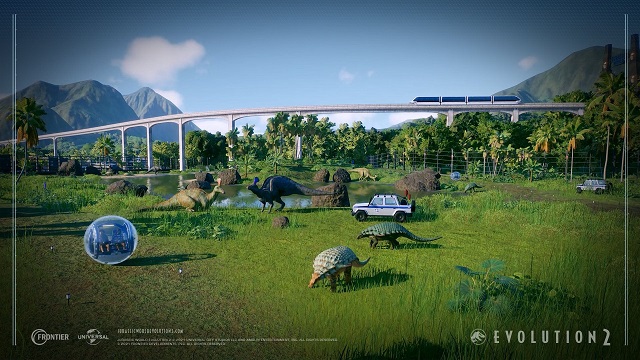
Since it launched in 2018, Jurassic World Evolution has received quite a few updates; jumping into it now feels completely different than doing so three years ago. Yet despite those improvements, it’s still a slow, plodding experience filled with some quirky, immersion-breaking decisions.
For the most part, Jurassic World Evolution 2 has cleared that up. Immediately apparent is how quickly things get going. That’s mostly thanks to JWE 2‘s inclusion of speed options a la’ Cities Skylines or Two Point Hospital. It cannot be overstated how this single system completely changes the feel of Jurassic World Evolution 2 for the better.
Another small but meaningful change is that herbivores no longer need feeders to eat. Painting enclosures with trees, ground fiber, and fruit as food sources feels much more natural and immersive than placing a trap-door feeder that pops up a munchable tree.
Contracts make a return, but they’re thankfully less soldier-of-fortune and more corporate-science-for-profit. Instead of putting different members of InGen at odds with one another and forcing you to weirdly choose sides for points, contracts in Jurassic World Evolution 2 are less aggressive, less gamified, and more in line with the overall tone of the franchise.
Jurassic World Evolution 2 Review — The Bottom Line
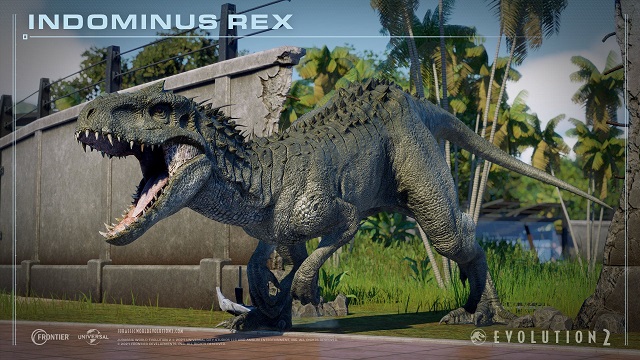
Pros
- Flying dinosaurs
- Aquatic dinosaurs
- New enclosures
- Herbivores don’t need feeders
- Improved management statistics
- Improved UI
- Chaos Theory mode
- Speed options
- Scientists
Cons
- Lackluster Campaign mode
- Some shaky voice-over in places
- Too micromange-y at times
- Some collision detection issues with buildings
- Locks everything for Sandbox mode in other modes
In both Chrichton’s novel and Steven Spielberg’s film, John Hammond wanted to create a wonder of the modern world where past and present converge to inspire awe and childlike wonder. After years of work, the product was the eponymous park that, for a time, achieved that goal. Until chaos came crashing through the gates.
With Jurassic World Evolution 2, Frontier Developments has, like Hammond, spent the years between Jurassic World Evolution and JWE 2 refining their formula. They’ve taken community feedback to heart and instilled the DNA that should have been there from the start into this sequel.
There are still things to tweak and lessons to be learned. Collision detection can still be an issue, especially in aviaries, and clicking on buildings doesn’t always register to bring up their menus. Things can get a bit mircomange-y when your park gets large enough, too. Treating E. Coli outbreaks while a blizzard rages and Stegasauruses destroy their enclosure can be a maddening turn of rapid-fire events.
But perhaps as well as anyone, Frontier realizes Hammond’s dream and that of those who have grown up dumbstruck by dinosaurs. With a fun and addicting gameplay loop alongside meaningful changes, Jurassic World Evolution 2 gets my endorsement.
[Note: Frontier Developments provided the copy of Jurassic World Evolution 2 used for this review.]

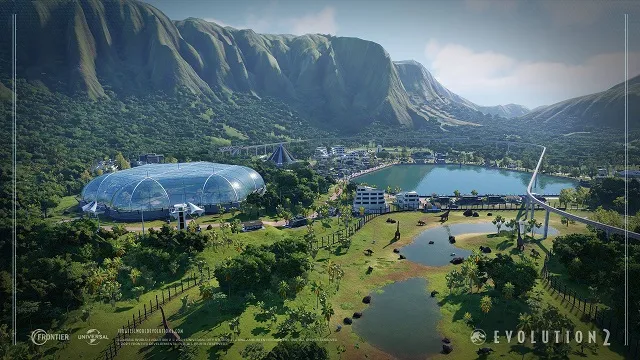








Published: Dec 7, 2021 10:17 am